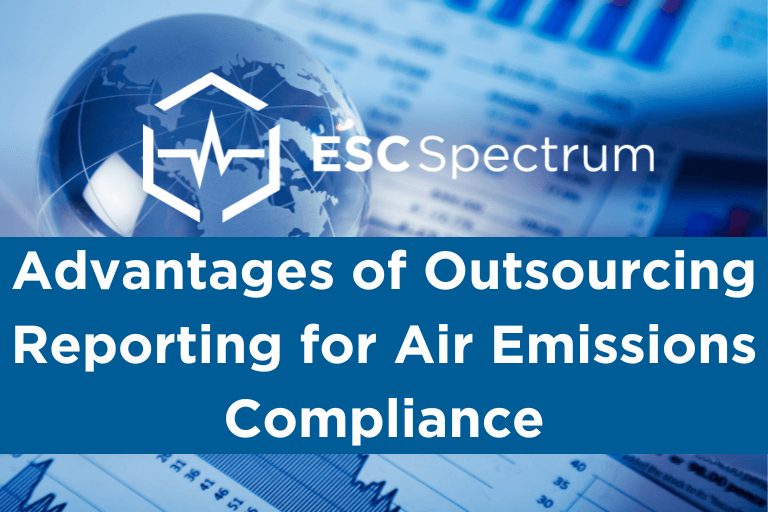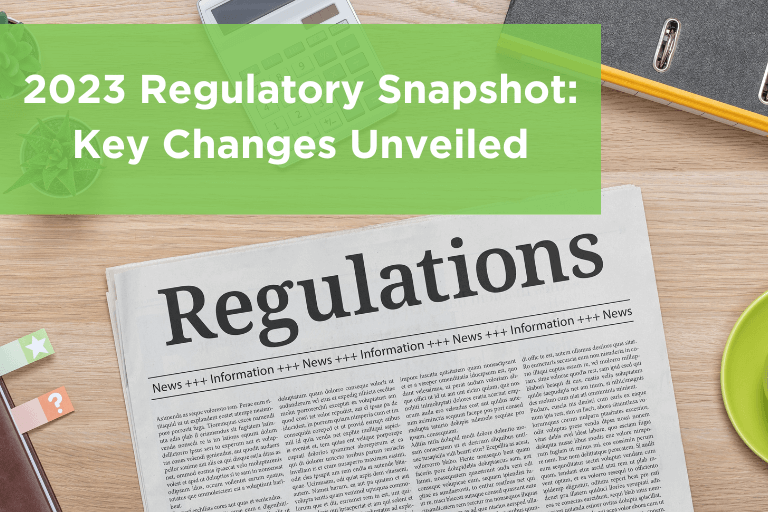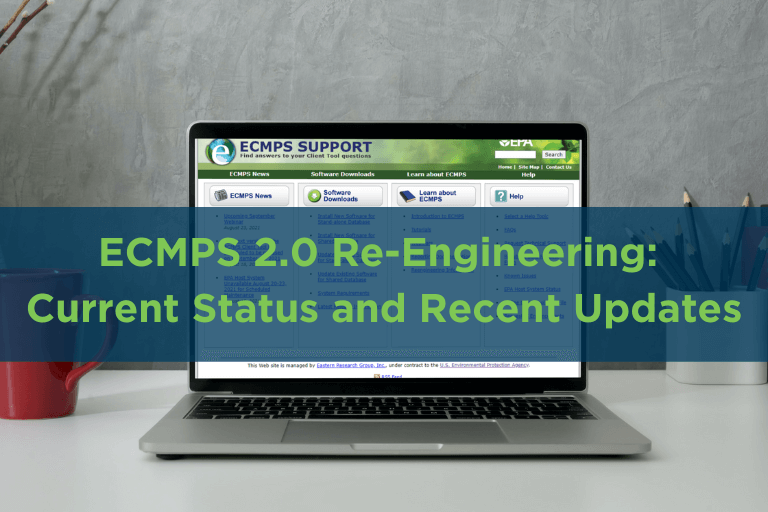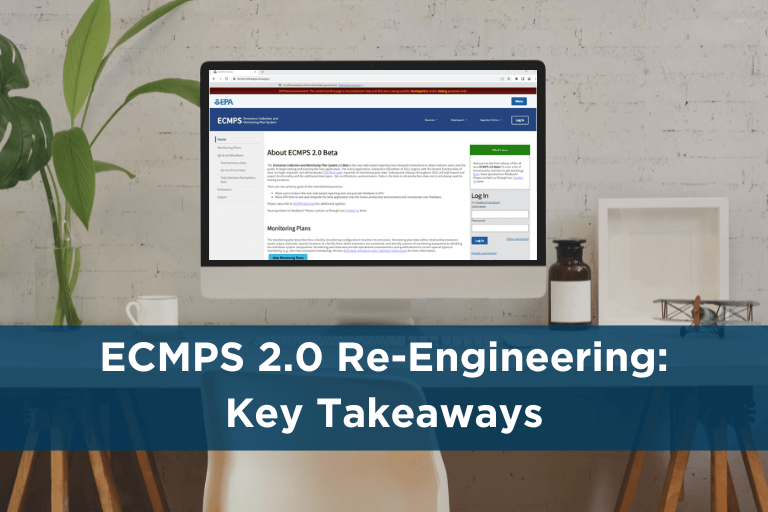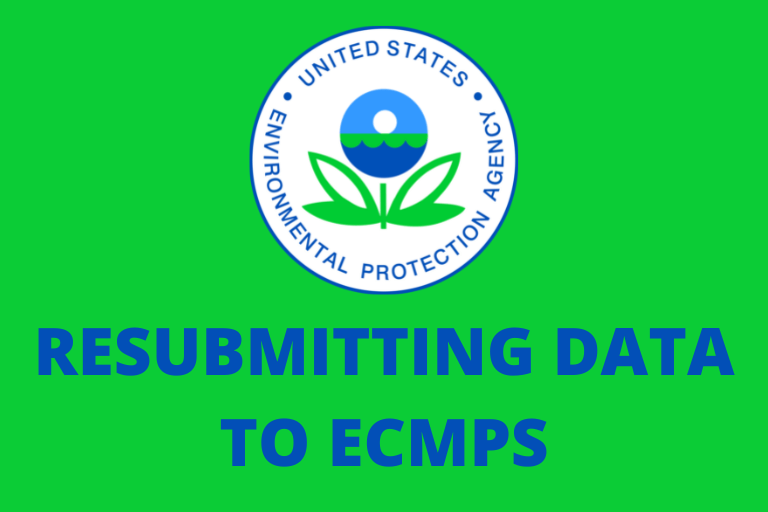Reporting Services
Our Reporting team can help you stay current on regulations, requirements, and reporting methods required by the Environmental Protection Agency. They can assist with Electronic Data Reports (EDRs), Permit Compliance Reports, Data Review, Low Mass Emitting (LME) units, and more.
Visit our Regulatory Services page to learn more about how we can assist you with Quality Assurance/Quality Control (QA/QC) Plans, Monitoring Plans, CEM and DAS audits, and training. Our analysts will ensure that your reports meet ever-changing requirements and are ready for final submission, saving you time and resources.
Electronic Data Reports (EDRs)
Our Reporting experts remotely access your data, generate an EDR, clean data, troubleshoot errors, and prepare files for submission to the Environmental Protection Agency (EPA) through the Emissions Control Monitoring Plan System (ECMPS). They alert you in advance to issues that require additional attention, such as the exceedance of a maximum load or Maximum Potential Concentration (MPC).
Reporting services team members enter all applicable quarterly and annual Quality Assurance (QA) and Quarterly Certification (QC) Test data in StackVision for Part 75 reporting requirements. They carefully check the validity of Part 75 test information in ECMPS via a QA Certification EDR.
QA Certification Test Data Entry Includes:
| Relative Accuracy Test Audit (RATA) | Air Emissions Testing Body (AETB) |
| Protocol Gas Verification Program (PGVP) | Linearity |
| Flow-to-Load | Fuel Flowmeter Accuracy |
| Fuel Flow-to-Load | Orifice Plate Inspections |
| Transmitter / Transducer Tests | Appendix E NOx Correlation Tests |
| Cycle Time Tests | Offline Calibration Demonstration |
| QA Certification Events | Extension / Exemption data |
| Annual Span and Range Check (per 40 CFR 75 Appendix A) | CO2 Control Chart |
Permit Compliance Reports
The Reporting team remotely accesses your system, reviews data for exceedances and downtime, troubleshoot errors, and generates quarterly reports required for permit compliance that are available in StackVision and Prism.
If you are subject to PADEP Revision 8, ESC Spectrum can prepare and verify your Rev. 8 Emissions EDRs in PADEP CEMDPS.
Prism Reports
| Excess Emissions | Startup Shutdown |
| Downtime Incidents | Downtime Summary |
| Calibration Detail | CEMS Log |
| Qualified Average | One Minute Data |
| Calibration Detail | Data Review |
| Specialized Permit Reports | …and more |
StackVision Reports
| Exceedance Events | Exceedance Events Duration |
| Downtime Events Duration | Downtime Events Duration |
| Performance Summary | 30-Day Rolling Average Detail |
| Operating Time Duration | Opacity Matrix |
| Removal Status | Startup Shutdown Incident |
| Periodic Monitor Availability | …and more |
Data Review Services

ESC Spectrum’s knowledgeable Reporting analysts will check your system, weekly or monthly, to ensure proper and accurate data collection. They alert you to any problems and eliminate any risk of missing data to keep you in compliance.
- Ensure hourly data is collected (polled)
- Inspect hourly data values for missing data, outliers, anomalies, and data flags
- Check calibration data
- Verify ProcessNow data processing completed successfully
- Review alarms
- Periodically validate Emissions and QA EDR in ECMPS
- Troubleshoot issues identified during review
- Alerts company staff to issues that require additional attention
Low Mass Emitting (LME) Services
40 CFR Part 75.19 provides an alternative monitoring methodology for certain qualifying oil- and gas-fired units to estimate SO2, CO2, and/or NOx emissions input in lieu of a CEMS. Units may qualify for the Low Mass Emissions (LME) methodology.
LME Reporting
LME plans are required to report for emissions and QA. In April 2023, the EPA announced that ECMPS 2.0 will not support LME file creation. They stated, “ECMPS 2.0 will no longer include the ability to prepare LME emissions files. Affected LME users will need to explore other options outside ECMPS for preparing quarterly emissions files.” The ESC Spectrum Team is standing by to assist with current ECMPS and ECMPS 2.0 LME reporting.
LME Conversions
Changing an existing unit in the Acid Rain Program to be classified as LME can only occur at the year’s end – the new status began on January 1, 2024. Plants must have submitted the paperwork for this classification change before mid-November. The ESC Spectrum team can help review facility data to determine if changing to an LME makes sense.
Seamless Integration Case Study
2023 Regulatory Snapshot: Key Changes Unveiled
ECMPS 2.0 Re-Engineering: Current Status and Recent Updates
ECMPS 2.0 Re-Engineering: Key Takeaways
Resubmitting Data to ECMPS
From The Source Blog
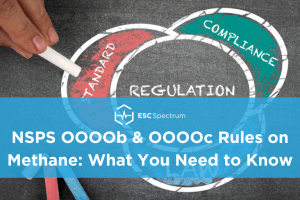
NSPS OOOOb & OOOOc Rules on Methane: What You Need to Know
Discover key insights on the EPA’s finalized NSPS OOOOb and OOOOc rules targeting methane emissions in the oil and natural gas sector. Learn about the stringent measures, compliance requirements, and industry impacts of these essential regulations effective November 2022.

Particulate Matter CEMS: Navigating New EPA Regulations
This article will walk you through the role of Particulate Matter (PM) Continuous Emissions Monitoring System’s (CEMS) in air compliance.

Refining Processes: Understanding Flare Requirements in EMACT
The Ethylene Manufacturing National Emission Standards for Hazardous Air Pollutants (NESHAP) under Subpart XX and YY establish requirements to control hazardous air pollutants (HAP) emissions from ethylene production units. This blog post focuses on the flare requirements specified in these regulations.

